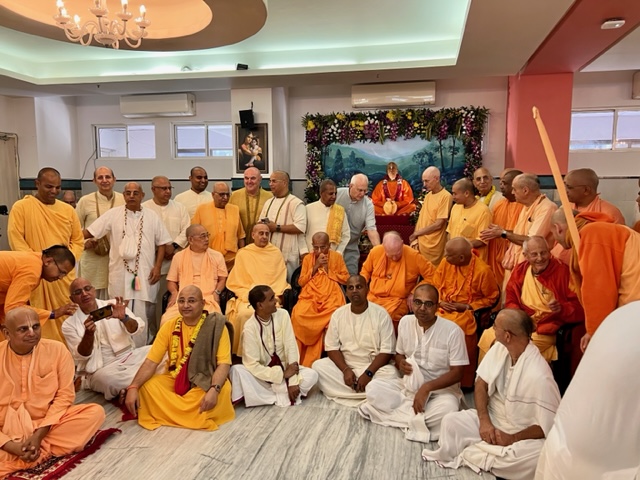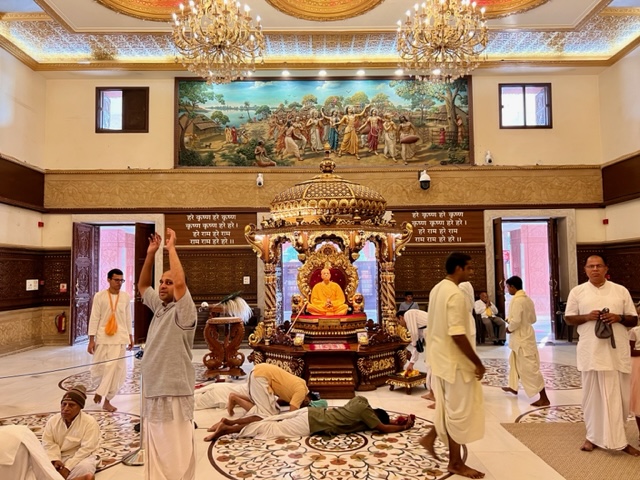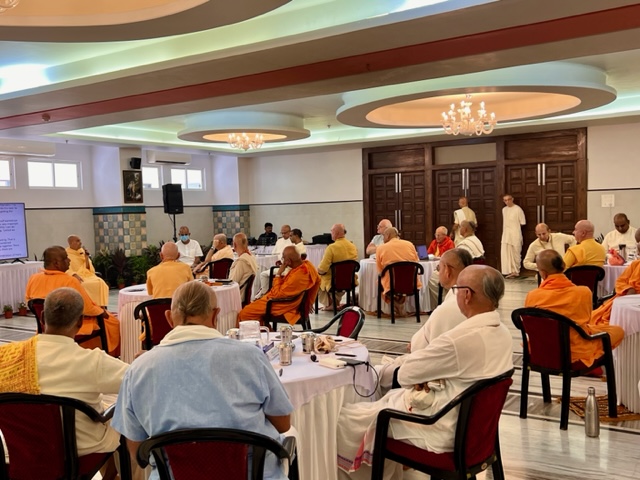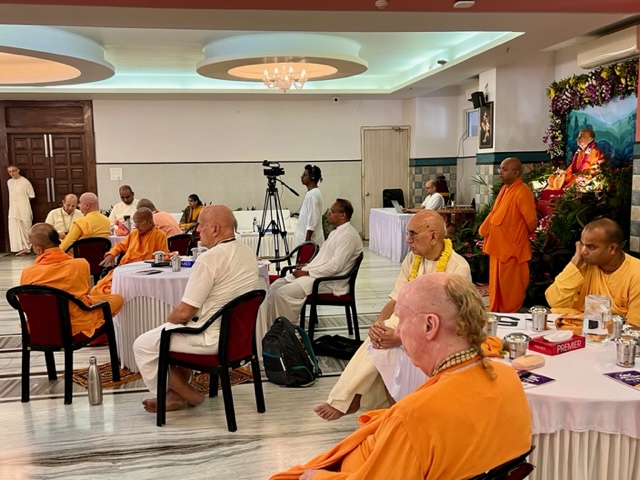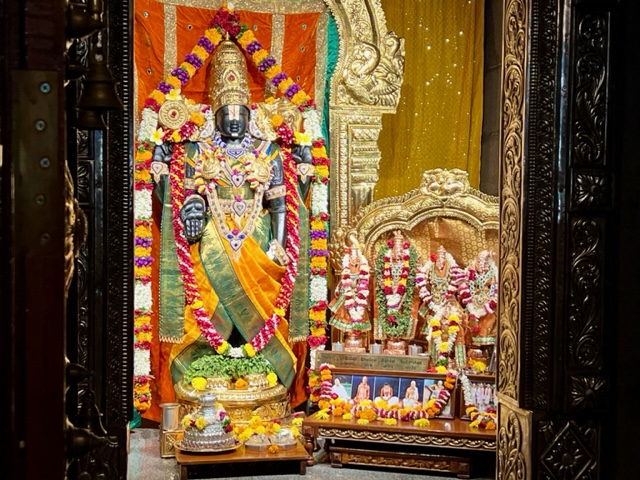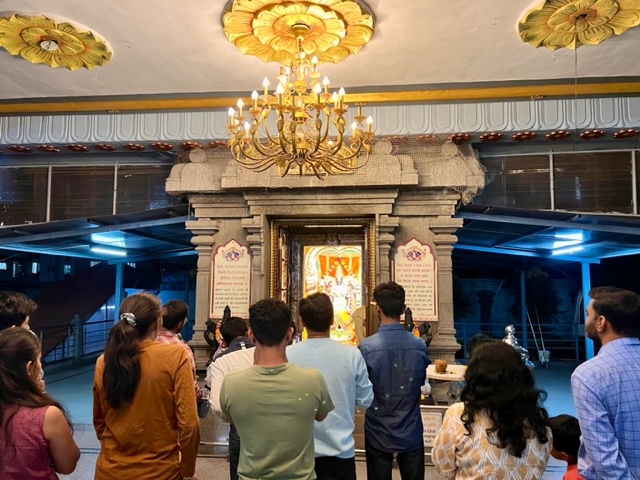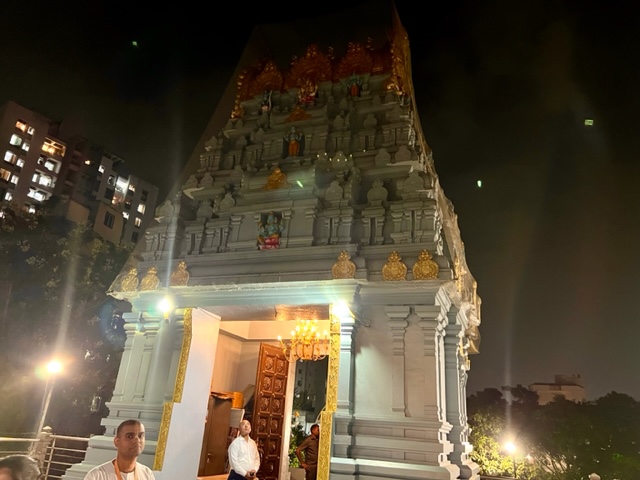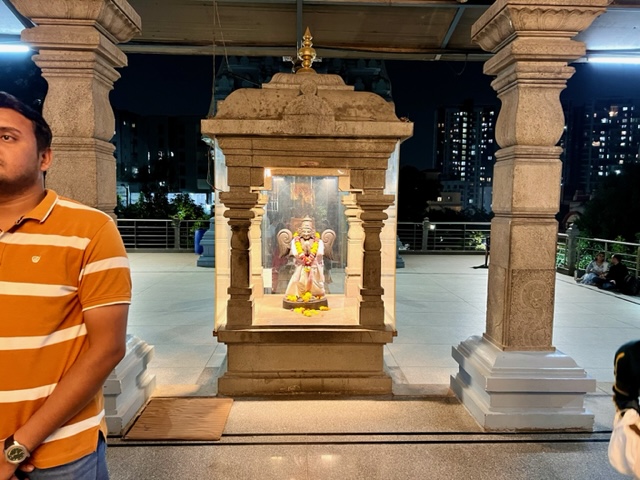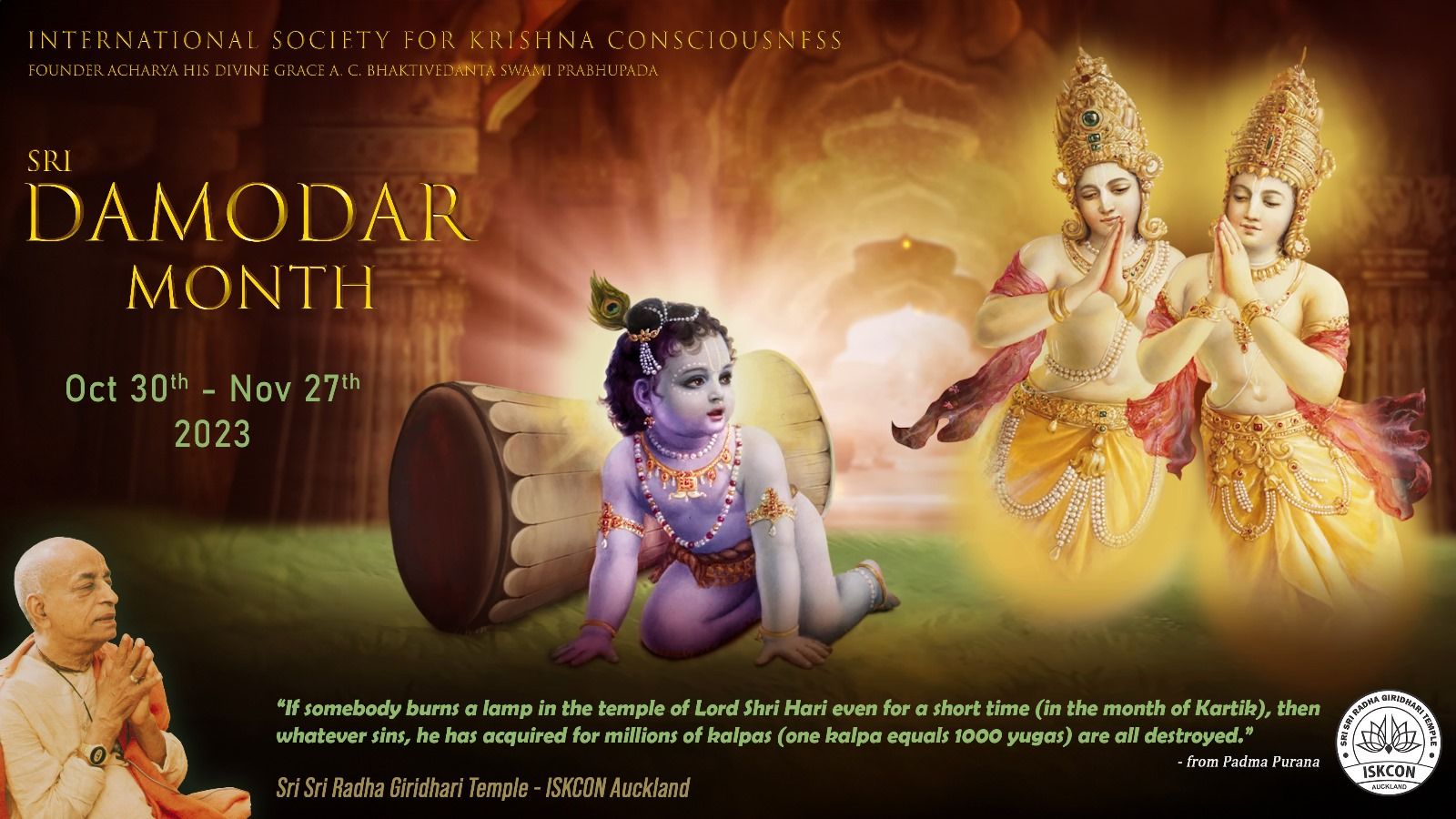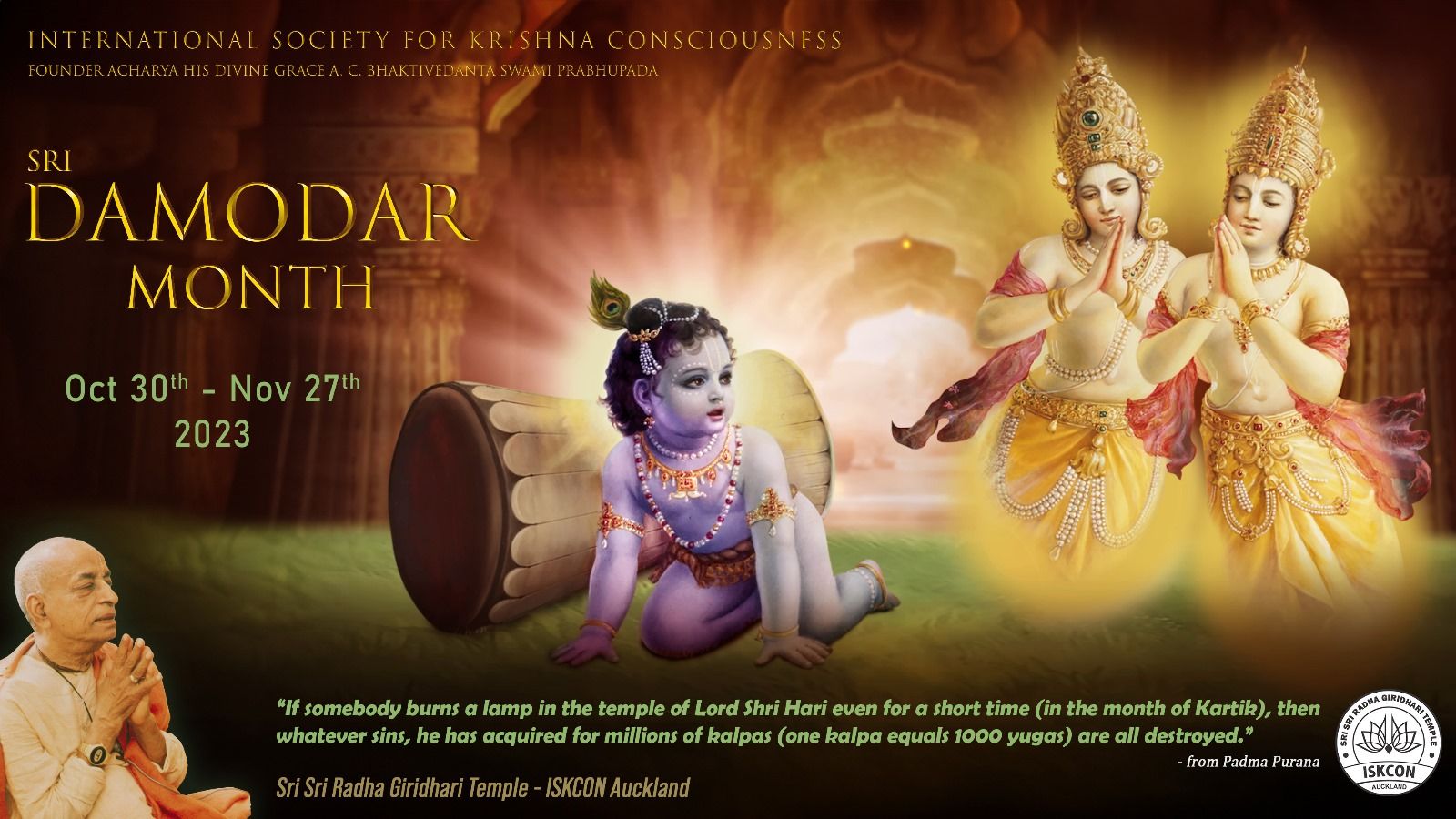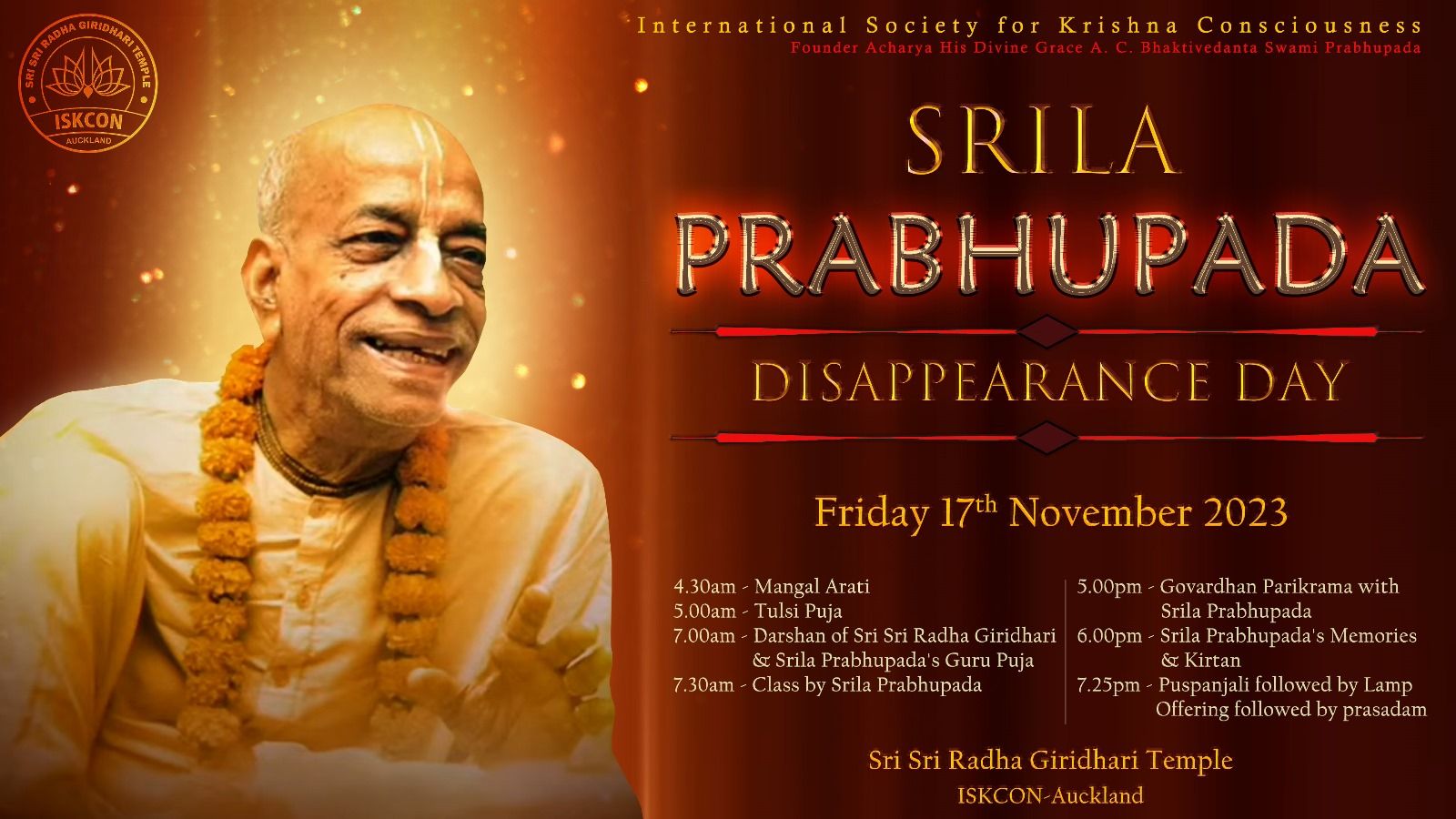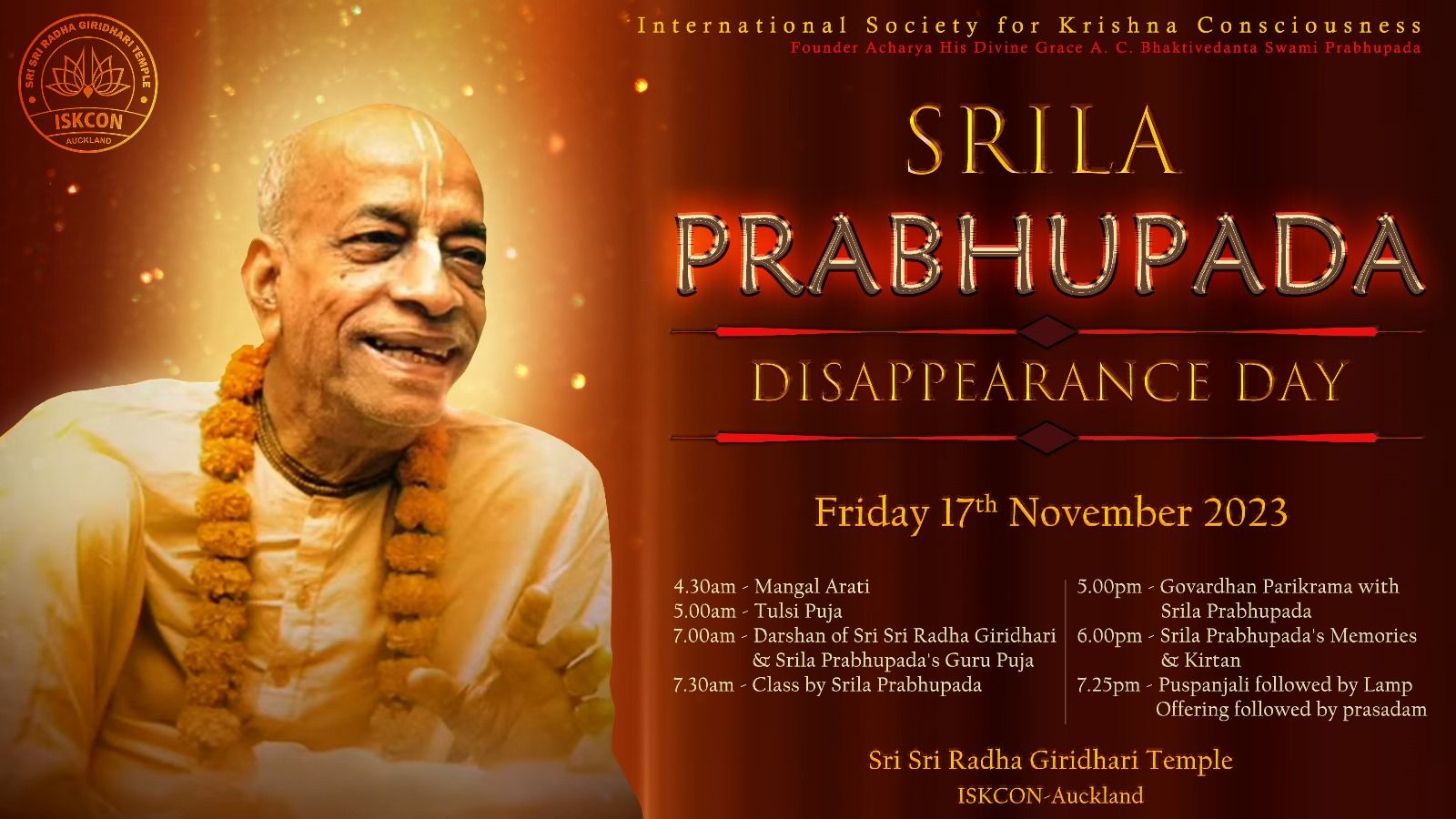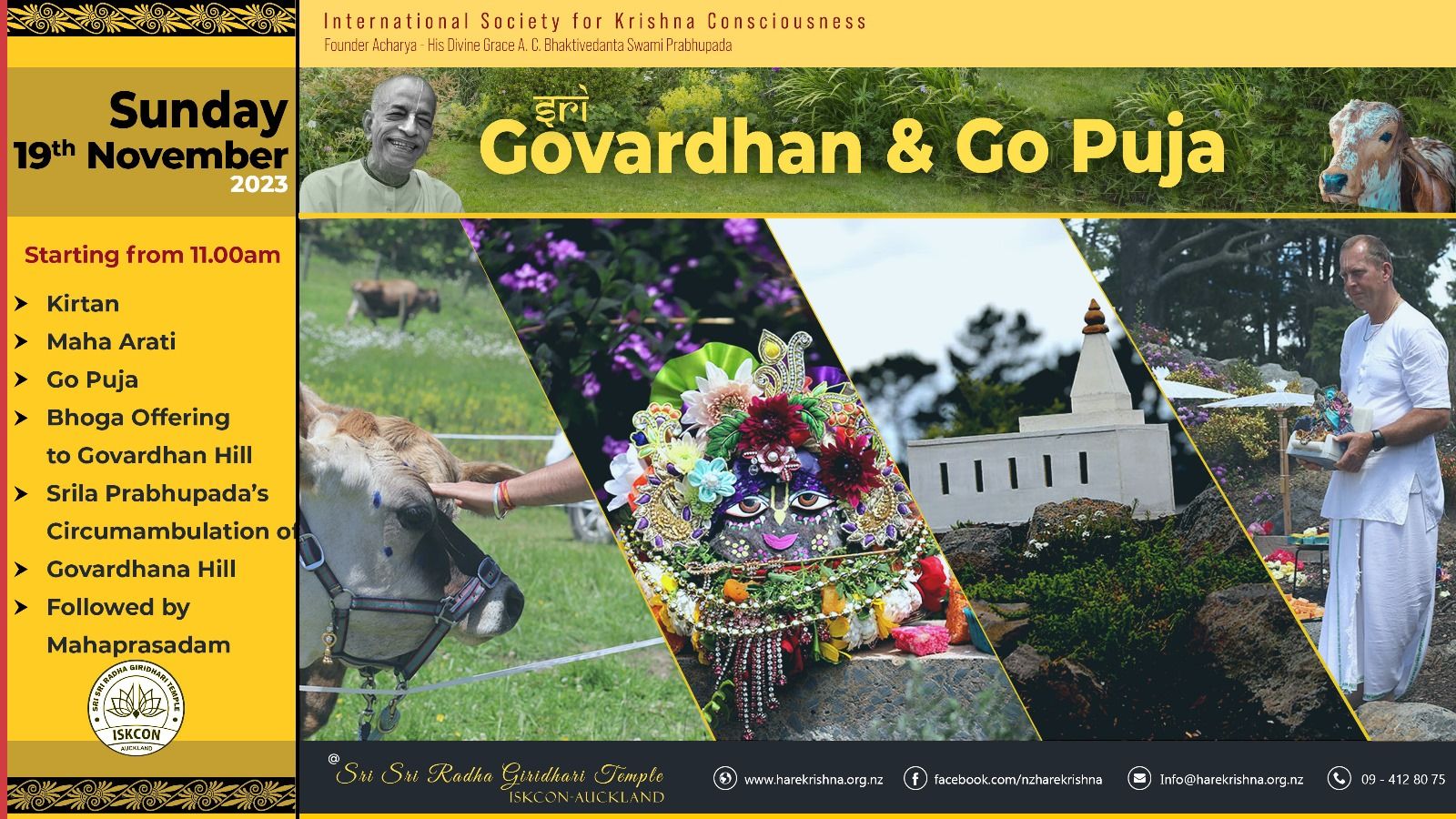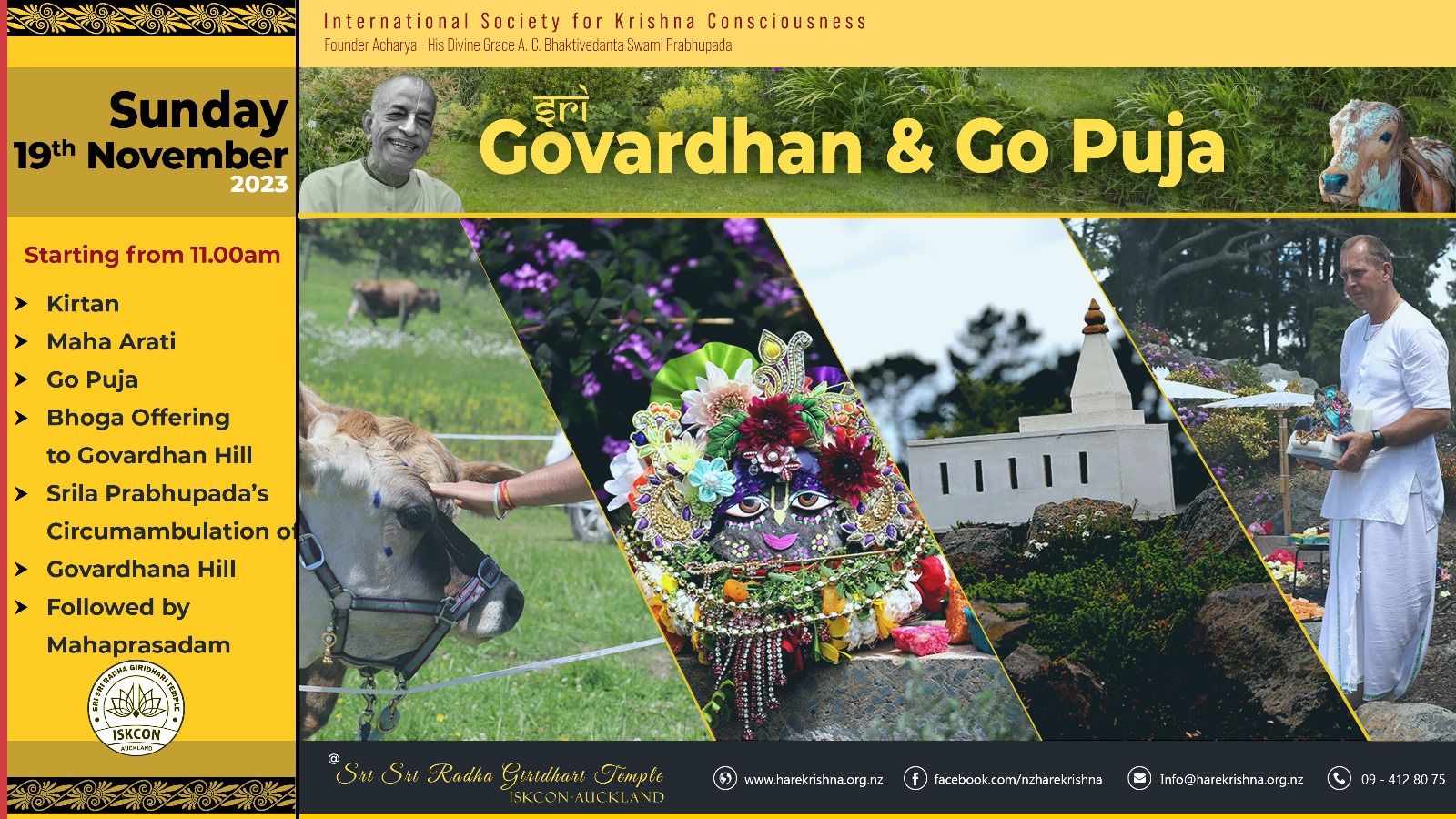Podcast:
Transcription:
Question: During online outreach if we rely on say YouTube guidelines or analytics or view counts then does that take away from our dependence on Krishna?And Krishnas arrangement whatever he makes for our outreach.
Answer:Yes, that’s certainly a possibility which we need to be cautious about guard against.
But it doesn’t have to be that.
Using our intelligence.Using contemporary strategic planning methods.And retaining our dependence on Krishna.Sentillions and dependence don’t have to be mutually exclusive.If you consider right going back to the time of the Mahabharata.
Arjuna.Did land strategy.Before especially the.Kurupshit raw and every morning.They would have a.Planning meeting and every evening after the war got over.For that day, they would have the review meeting.And the planned who would be confronting which enemy.
So war is extremely serious business and without strategy it’s unlikely that one can be effective leave alone successful.
So.Physically also.
His whole vision of going to the west.When things are not working out in India.Was strategic planning.And it did work, of course, it’s not that in the west, he got success immediately.I was in a certainly not that.In the profit not Arjuna were not dependent on Krishna.
Profile would often tell devotees, double it.With respect to book distribution, he said that I will come to the temples where there is maximum solution being done.And that way.
He felt that he would be able to.Encourage devotees to distribute more and more books.
Now, it is true that.Somebody would have got so consumed by Buddha distribution that they forgot other things. Sometimes they would try to.Sabotage other people devotees book distribution, so that they could be the ones who distribute the maximum number of books.
That certainly was.Counterproductive and anti-spiritual.
What to speak of entity devotional.
Krishna is pleased by the offering of our heart and Krishna provides us facilities.For us to make that offering.At the same time is a matter of the heart.It’s not just a matter of the heart.Because that heart is to be expressed in this world.And while expressing in this world.
A certain level of competence in certain level of success are essential.If we want.Our service to benefit the world.So if we consider.
Sharing spiritual wisdom to be like.Sharing a spiritual therapy or treatment to people who are sick with everybody in the material world being sick with materialism though, they may not be sick of materialism.That means they don’t think that materialism is the cause of the problem, they don’t want to give it up but still materialism is a part of their problem.
Then we should then we are meant to be like the medical support staff.With surgeons doctors nurses whatever who are meant to heal people.Now.The more people are healed.The more it is fulfilling for us but then healing has to be a holistic parameters not just that we give some pain medication cover up the pain and people say that I feel good and now we are successful.
So,If medical research shows that particular ways of treating people.Particular methods and modalities.Are more effective than others then.Using those nothing wrong at all.If you maintain our service attitude, and if we try to.Consider that various strategies are simply aids for us in serving Krishna.
Then we can move forward in that direction.With studyers.If.Statistics and numbers become the soul definer of our success, then definitely we could.We couldn’t we will get distracted from Krishna that will be entirely a material conception of service. But just as in the book the philosophy matter is not intrinsically Maya.
Matter is also energy of Krishna.And depends on our vision whether we see matter as connected to Krishna or separated from Krishna.Similarly.
Material success.Can also be a parameter of.For measuring our devotional success, but it should be the sole parameter.You destroy Maharaj became an emperor of a performing large and performed yeah as a means of glorifying Krishna his material success was also in that at that context a part of a spiritual success later on when he lost his entire kingdom and the entire welfare had got to go to the forest at that time also he was spiritual successful because you still connected with Krishna and depending on Krishna and absorbing Krishna.
But.That didn’t lead that time doesn’t the opposite of material success.So.We couldn’t conclude talking about a pendulum where one extreme is to equate devotional success with some material success, even that some even more narrowly some numerical success or.Equate spiritual effectiveness of our service with with to reduce spiritual effectiveness of our service to somebody else strategies.
The other extreme the pendulum is to.Oh consider that spiritual service has nothing to do with material strategies at all.But at the balance of the pendulum would be if we understand that Krishna.Is.
A part of who that Krishna the material world is also included in in Krishna and with and within our domain of service to Krishna and material strategies and material statistics.Are one parameter of success not the sole parameter of success and the intelligence to utilize the statistics also comes from Krishna.
But we are not just our intelligence we are souls and these are hard that is to be offered to Christiana if you keep that in mind.And.Make sure that strategies and statistics and material successes total consumer consciousness.But are just one part of our consciousness then.We can perform bhakti.
In a way that is both going to connect our heart with Krishna and also.Connect us with the world so that we can take Krishna’s message.And mission.From our heart to their heart.
End of Transcription.
